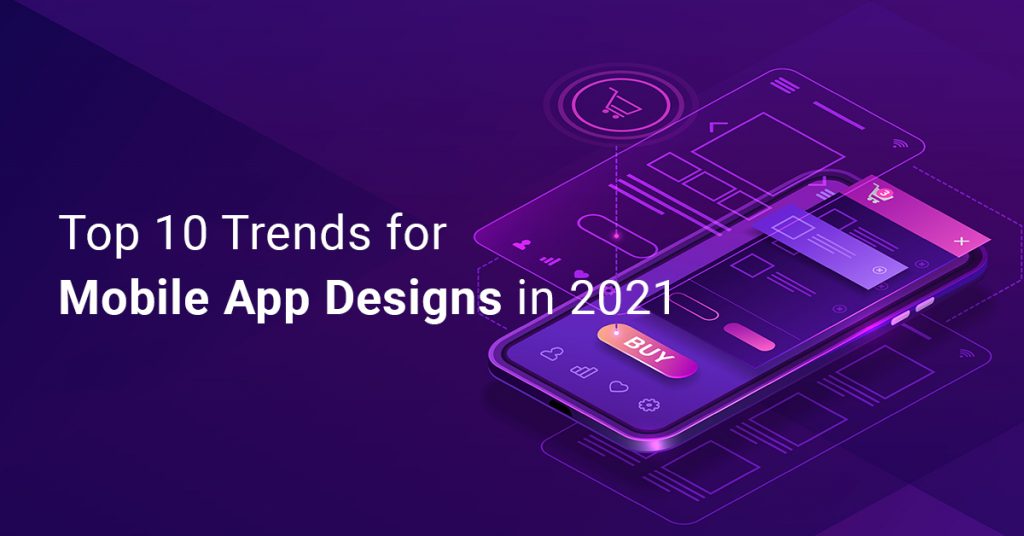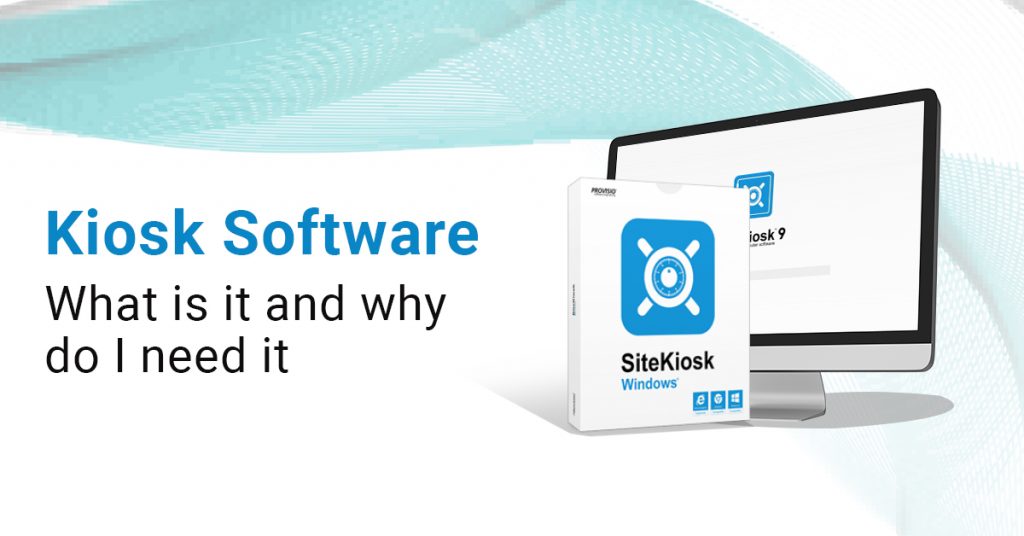Driven by advanced technologies, the on-demand music streaming industry continues to grow. Undoubtedly, developing your own audio streaming app like Spotify sounds like a great idea — but where to start?
If you’re wondering about anything related to Spotify, and the relevant parameters of creating a Spotify-like app, this article is for you!
Why Consider Spotify?
Spotify is a pioneer in the on-demand music streaming industry. It is the most widely-known music app, with 144 million premium account holders out of 320 million active users, as of October 2020.
The Spotify users have access to a variety of music services, such as Discover Weekly playlists, Global Top 50, Today’s Top Hits, and some experimental ones like the Australia-only station.
The music available in Spotify comes in two sound qualities:
- 160 kbit/s audio quality, with a freemium account.
- 320 kbit/s audio quality, with a premium account.
To top it all off, Spotify has Facebook integration, which allows its users to share what they like with their Facebook friends. This provides Spotify a competitive-edge, as its rival music streaming apps do not provide such integrating features.
Spotify and Music Streaming Statistics

In almost all the countries throughout the world, people have turned to their mobile phones to do pretty much everything. These days, text messages and phone calls make up only a small fraction of the total time that people spend on their cellular phones.
The majority of their time is spent on using apps, playing games, and accessing on-demand services.
If we talk about on-demand music services — there are various available resources, such as:
- The online radio stations.
- YouTube, which is not preferred nowadays because it can’t be operated in the background.
- On-demand music streaming facilities, like Spotify and Apple Music.
These prominent services are the first choice of music streamers in every demographic.
The fact that music-streaming services beat the competition is documented by the following tallies:
- The music streaming market is growing steadily worldwide, and its global subscriber base is expected to reach 2.81 billion users by the end of 2025. That is equal to one-third of the entire population of the world!
- On-demand music streaming app industry is expected to reach a valuation of $17.50 Billion by the end of 2025.
- 14% of the current global population uses paid music streaming services several times a day.
- In the US alone, more than 185 million people hold a premium account in some music streaming app.
We note that out of all the different music resources available — on-demand music streaming is the most popular. And by looking further in depth, we find that among all the on-demand music streaming service providers — Spotify is the most popular.
- Spotify has over 300 million active users, and approximately 150 million paid subscribers.
- About 36% of the entire global music streaming market is captured by Spotify, with Apple Music at 19% and Amazon Music at 12%.
- An astounding 72% of the Spotify users are millennials. This is indicative of a steady growth of apps like Spotify in the future too!
Must-Have Features in An App like Spotify

1. Registration
Registration, or signing up is an important feature if your plan to offer premium accounts to your customers. This process should request for information like:
- Name
- Email address
- Phone number
- Age
- Country
All these parameters help in making an educated guess about the music preferences of a person.
2. Search
Searching enables the users to discover the songs and tracks they like. You should allow the users to search on the basis of various attributes such as song title, artist name, album name, podcast title, genre etc.
Additionally, the search results that approximately match the keyword entered by the users should also be displayed, as they might not know the exact spellings of a song or an artist, especially of foreign origin.
3. Social Integration
The overall success of your app will majorly come through social media promotions. Giving your freemium and premium listeners the feature to share their favorite songs, tracks or playlists directly via social media sites will have a positive impact on the growth of your app.
The more well-known your app is on social media, the higher credibility it gets in your target audience’s eyes; hence, more people become likely to purchase your premium services.
4. Online and Offline Access
The songs, tracks and albums in your music database should be available to your users online, as well as in an offline fashion by marking them as downloadable content.
Offline access is a great feature that allows your listeners to enjoy their favorite songs without relying on an internet connection. Moreover, it turns regular users into long-term customers as they wouldn’t have to switch apps to satisfy their varying music needs.
5. Make Customized Playlists
Providing the option to customize playlists by letting your users add or remove their personal favorite tracks is an appealing way to engage them. With customized playlists, your app won’t be perceived as a plain, general or boring one; but a personalized one that can be adjusted as per will.
Also, allowing for direct/easy access of the customized playlist provides the users with added convenience.
6. Recommendations
Adding a feature in your music streaming app to display recommended tracks based on the users’ previously searched or liked songs is another great way to engage them.
7. Push Notifications
Push notifications work wonders in attracting your users. Valuable offers, benefits, deals, newly added songs, discounts, special playlists etc can be brought to your users’ attention with the help of push notifications.
Data processing tools employed by firms indicate that utilizing push notifications increases the app usage by about 20%!
8. Playing local files
This feature is important for user convenience as they won’t have to leave your app to listen to local songs.
All the major music streaming apps like Spotify, Apple Music, Amazon Music etc allow you to play local files stored in the physical memory — in addition to their general on-demand streaming services.
Spotify’s Technology Stack
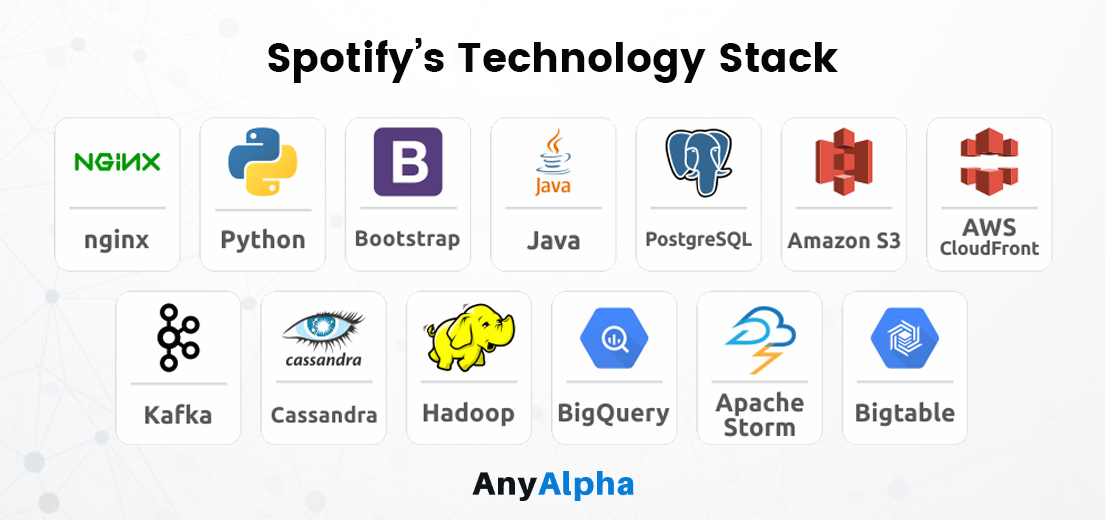
The following underlying technologies are responsible for the creation and maintenance of our beloved Spotify app.
Programming and data constructs:
- Python
- NGINX
- Java
- C++
- Bootstrap
- PostgreSQL
- Amazon S3
- Amazon CloudFront
- Kafka
- Cassandra
- Hadoop
- Google BigQuery
- Apache Storm
- Google Cloud Bigtable
Functionality:
- Google Analytics
- Twilio SendGrid
- Optimizely
- Google Cloud Dataflow
- Lookback
- Hub Framework
DevOps:
- Docker
- New Relic
- Datadog
- Pingdom
- TestFlight
- Percy
- Apache CloudStack
- Helios
Business utilities:
- G Suite
- AdRoll
- Qualaroo
- com
- Blossom
What It Costs To Create An App Like Spotify (And How To Make Money Out of It)
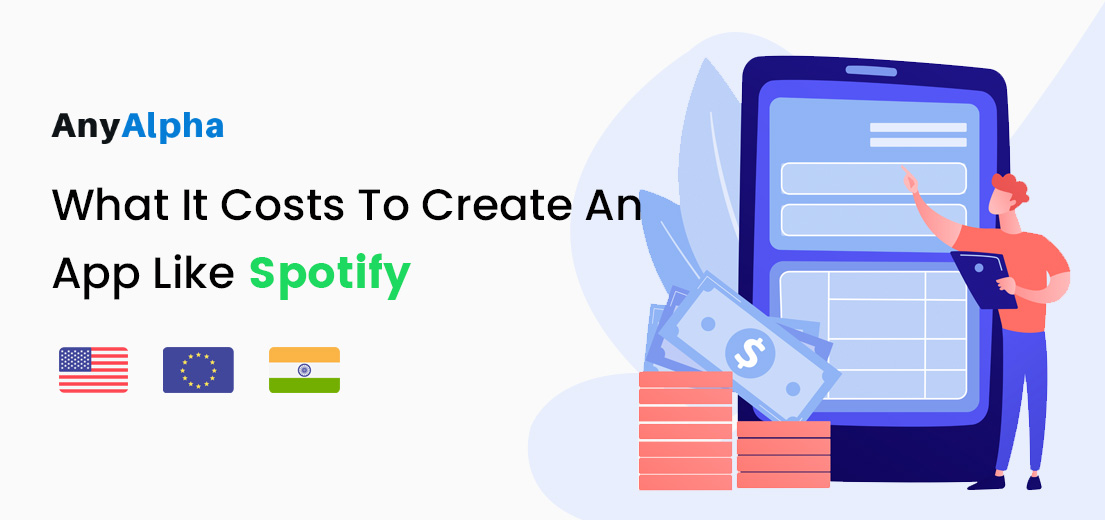 The Development Cost
The Development Cost
The cost of developing a music-streaming app depends mainly on two factors:
- The number of features included in the on-demand music streaming app.
- The target platform of the app.
The development of “phone” versions of a software written in a high-level language such as Java or C++ involves an extensive process which consumes a lot of time.
For that reason, most of the music app development companies charge on an hourly basis, depending on the complexities of the desired features.
The hourly app development charges vary as per the location in the following manner:
- US based establishments charge- $50 – $250 per hour.
- Western Europe (chiefly UK, Germany, France, Belgium and Ireland) based establishments charge- $30-$170 per hour.
- Eastern Europe (chiefly Poland, Hungary, Ukraine and Romania) based establishments charge- $20-$150 per hour.
- India based establishments charge- $10 to $80 per hour.
Conclusively, on an average, the cost of developing a Spotify-like music streaming app is in the range of $25-$40K.
This is inclusive of all the charges of developing various units, such as Quality Assurance, Testing and Debugging, UX/UI design, back-end development etc.
Is Investing in a Spotify-like App Profitable?
You’ll have to lay out a significant sum of money, amounting to about $25,000 to $40,000 in creating a music-streaming app like Spotify.
How worthwhile is that?
 We’ll answer that with the relevant stats.
We’ll answer that with the relevant stats.
As of October 2020, Spotify’s user base is 320 million, with 144 paid subscribers. This has earned Spotify a mind-blowing revenue of 1.98 billion euros, or equivalently $2.4 billion in just the third quarter of 2020!
This should be enough to give you an idea how potentially profitable such music-streaming apps are.
How To Make Money From Such Music-Streaming Apps?

There are two basic ways to earn money from an on-demand music streaming app:
- Premium subscriptions
You can charge a certain amount for paid in-app services, like removal of ads, better sound quality, offline access to music, 24/7 availability, unlimited streaming, using the premium account on multiple devices, exclusive artist podcasts and behind the scenes content.
Additionally, you can give the users multiple variants of premium accounts that’d fit their needs better. For example, they should be free to choose whether they want a premium account for a month or a year.
Over and above, they should be given multiple payment alternatives, such as debit cards, credit cards, PayPal etc. to make payment and monetization more flexible.
- Advertising
Generating ad revenue is the primary source of income of most apps. Displaying, or audibly running an advertisement at specific intervals to promote other products in a non-invasive way is both: simple and effective.
With a large enough subscriber base, the app could generate billions in revenue with just these two as the monetization schemes.
Spotify — A Case Study
What is Spotify?
Spotify is a Swedish audio streaming services provider, launched in October 2008, but founded back in April 2006. It runs on all platforms i.e., iOS, Android, Windows, macOS, Linux and is supported on almost all devices, such as smartphones, tablets, PCs, Smart TVs etc.
Available in 92 countries as of January 2021, Spotify has its global headquarters in Stockholm, Sweden and corporate headquarters in the New York City.
Spotify’s Serviceability and Reach
Spotify is available as two services — freemium and premium.
As a freemium service, Spotify provides basic features with commercials, limited access control, and reduced sound quality.
Additional features, such as offline listening, ad-free access, and better sound quality are offered via Spotify’s premium services.
About its demographic reach, Spotify is available in:
- Most of Europe
- Most of the Americas (South and North America)
- Oceania (Australia and New Zealand)
- Parts of Africa (Algeria, Egypt, Morocco, South Africa and Tunisia)
- Parts of Asia (Hong Kong, India, Indonesia, Israel, Japan, Kuwait, Lebanon, Malaysia, Oman, Philippines, Qatar, Saudi Arabia, Singapore, Taiwan, Thailand, United Arab Emirates and Vietnam.)
- Set to be available in South Korea by the end of 2021.
As of October 2020, the music-streaming giant has 144 million paying subscribers, which generate more than 75% of Spotify’s income.
Spotify’s User Growth
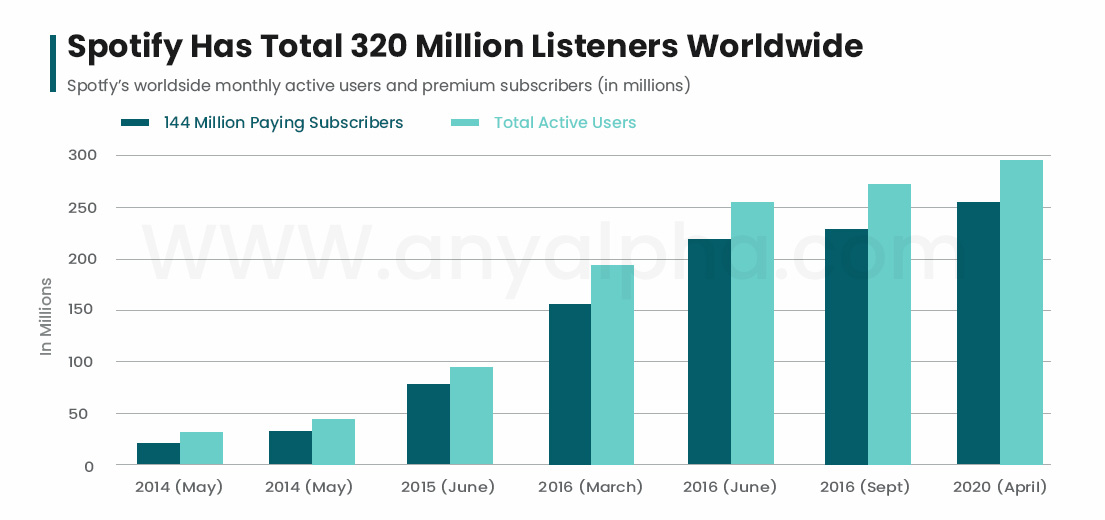
March 2011: 1 Million paying subscribers
Sept 2011: 2 Million paying subscribers
August 2012: 15 Million total users; 4 Million paying subscribers.
March 2013: 24 Million total users; 6 Million paying subscribers.
May 2014: 40 Million total users; 10 Million paying subscribers.
Dec 2014: 60 Million total users; 15 Million paying subscribers.
June 2015: 75 Million total users; 20 Million paying subscribers.
March 2016: 30 Million paying subscribers.
June 2016: 100 Million total users
Sept 2016: 40 Million paying subscribers.
April 2020: 133 million paying subscribers
Currently: 320 Million total users; 144 Million paying subscribers.
Spotify’s Acquisitions
- In May 2013, Spotify announced the acquisition of Tunigo, a music discovery platform.
- In March 2014, they announced the acquisition of The Echo Nest, a music intelligence company.
- In June 2015, Spotify acquired Seed Scientific, a data science consulting firm.
- In January 2016, Cord Project and Soundwave were acquired by Spotify.
- In April 2016; CrowdAlbum, a specific photo and video collecting platform was acquired by Spotify.
- In November 2016, Spotify acquired Preact, a cloud based platform.
- In March 2017, Spotify announced that to make its customized playlists better, they’ve acquired Sonalytic, an audio detection startup. Also, they acquired MightyTV, which is a television streaming services provider.
- In April 2017, Mediachain was acquired by Spotify.
- In May 2017, Niland, an artificial intelligence startup, which improves personalization and recommendation features was acquired by Spotify.
- In November 2017, Spotify acquired Soundtrap, a music studio startup.
- On 12 April 2018, Spotify acquired Loudr.
- On 6 February 2019, Spotify acquired the podcast networks Gimlet Media and Anchor FM Inc., and officially stepped into the podcast business.
- On 26 March 2019, Spotify announced the acquisition of another podcast network, named Parcast.
- On 12 September 2019, Spotify acquired SoundBetter, a music production platform which allows collaboration and distribution of music tracks for licensing.
- On 5 February 2020, Spotify announced the acquisition of a podcast network called The Ringer.
- In November 2020, Spotify acquired Megaphone from The Slate Group for $235 Million USD.

Director @Anyalpha, a Top Software Development Company offering Mobile App Development and Website Development Services to Businesses & Startups.


